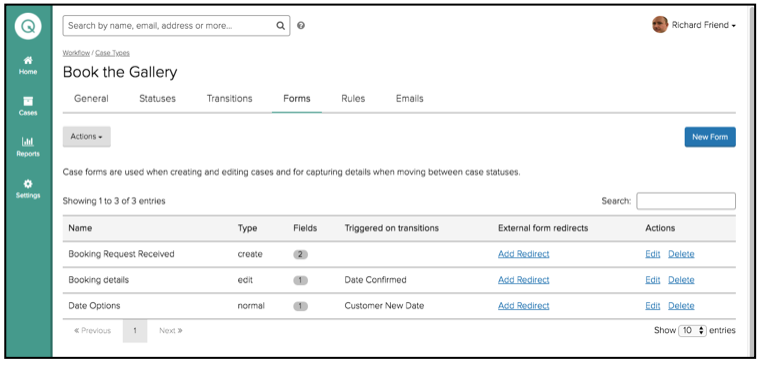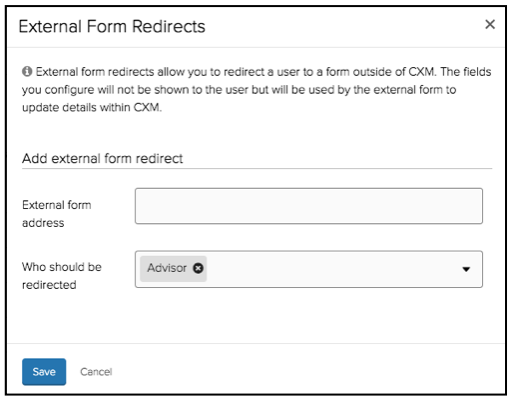Forms
Why are forms needed?
Forms are used for capturing data about a case when it is created, edited or when it progresses in the workflow.
What is the difference between a Jadu Connect form and an XForm? A Jadu Connect form defines what data you capture about a Jadu Connect case. You will always need to have a Jadu Connect ‘create’ form for a case type, and optionally an edit form or forms attached to transitions. Fields are added to create the case type through inclusion in a Jadu Connect form.

Fields can be used across multiple case types with the ‘label’ for the field being amended within the form for each case type. This is important as it enables choice type fields such as Yes / No to be reused across multiple case types rather than creating new fields for every workflow. However please be aware that the case field label will be displayed in the timeline view, the alternative label will be viewable in the form view it was amended for.
Jadu Connect forms are only accessible inside Jadu Connect, and a customer services advisor might create and edit a case using these forms. Customers can also enter data about a case using Jadu Connect forms when directed to a case in Jadu Connect.
Editing a Jadu Connect form
Jadu XForms can also be used to populate a Jadu Connect case and enable front end customers to create or update cases from your website. Unlike Jadu Connect forms, XForms enable card payments to be taken, bookings to be made, and can provide complex routing based on answers to questions and calculations.
What types of Jadu Connect form are there?
There are 3 types of Jadu Connect form:
Create form - is a system form which defines the fields captured when creating a case in Jadu Connect or XForms.
Edit form - is a system form which defines the fields that are editable in the ‘details’ tab of a case, which can be edited when clicking the ‘edit’ button on the ‘details’ tab, or edited from an XForm. In the details tab all case fields are visible to allowed roles however only those that are in the Edit form can be updated via the Edit option.
Standard form - These are created by the user and can be applied to transitions and updated in Jadu Connect or from an XForm.
What types of Jadu Connect form fields are there?
There are four different types of Jadu Connect form fields:
-
Normalcase fields - which are created by the user. -
Person- Adding this field to the ‘create’ form of a case type will ensure that a customer record must always be associated with cases of this type. These cases can be raised from a person record by clicking ‘new case’. If a person attribute has been added to a create form then it will not be an available option from the ‘New Case’ button without first selecting a customer.
If the person attribute has been marked as optional then within Jadu Connect the case type will still only be available after a person record has been selected however if the case is being created via a XForm then the requirement for mandatory sign-in for the customer to be able to complete the online form is optional.
-
Address- Adding this field require an address to be associated with cases of the type. When creating a new case the user must enter a postcode, lookup and select an address or manually add an address. -
Organisation- adding this field requires an organisation to be associated with cases of the type.
External form redirect
External form redirects allow you to redirect a user to a form outside of Jadu Connect. The fields you configure will not be shown to the user but will be used by the external form to update details within Jadu Connect. This option potentially allows different types of user to complete different forms off the same transition trigger if required.
